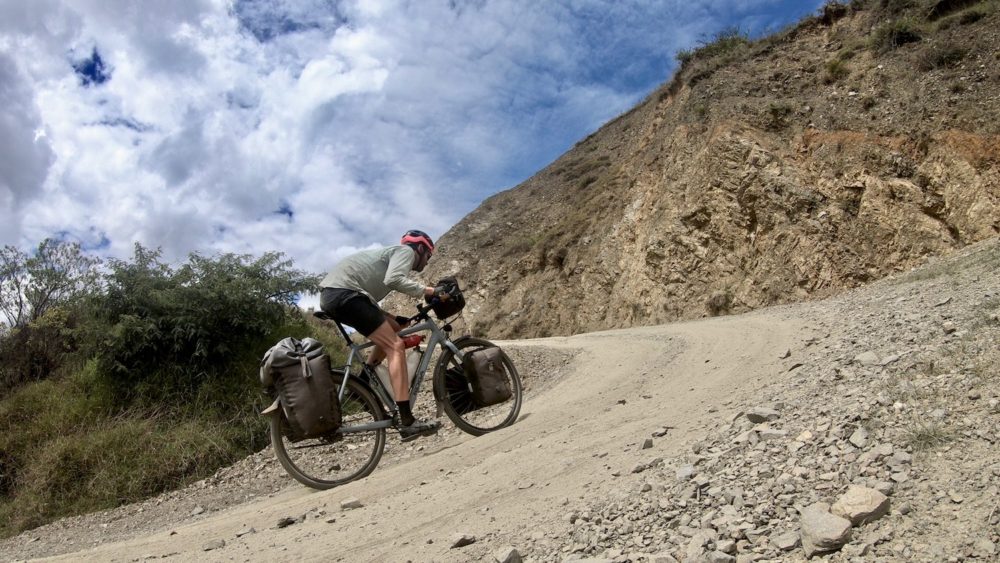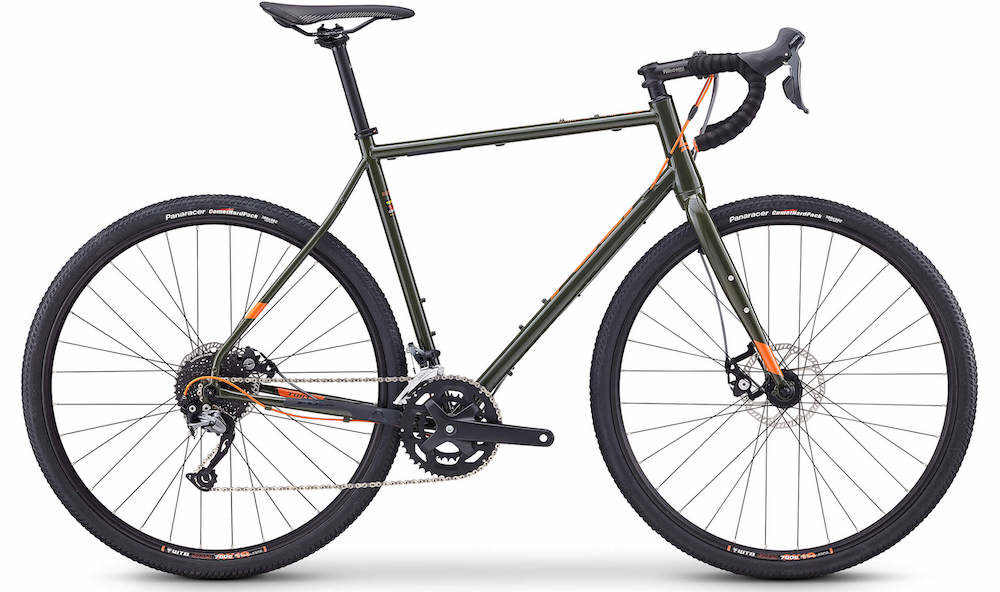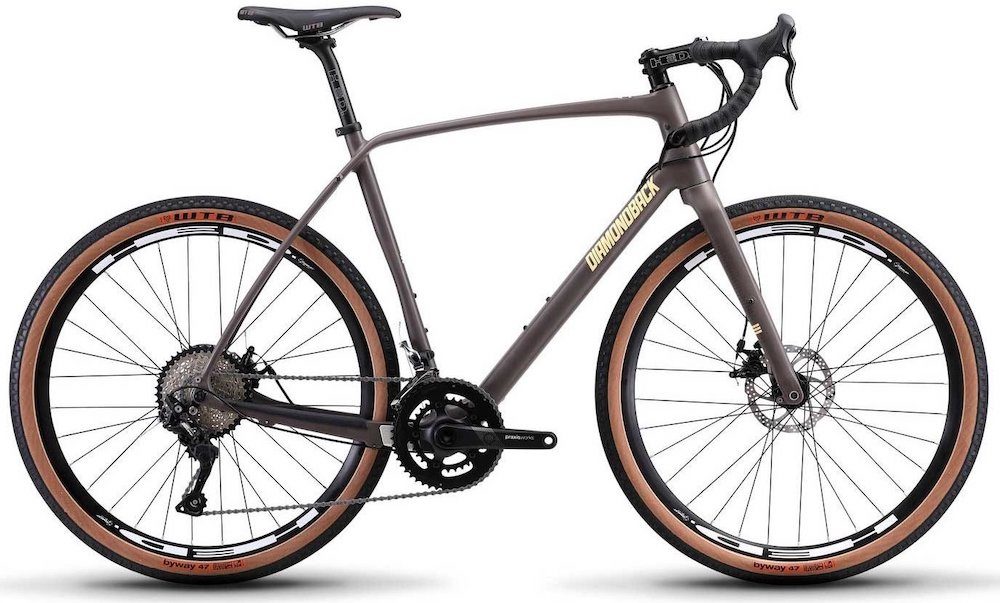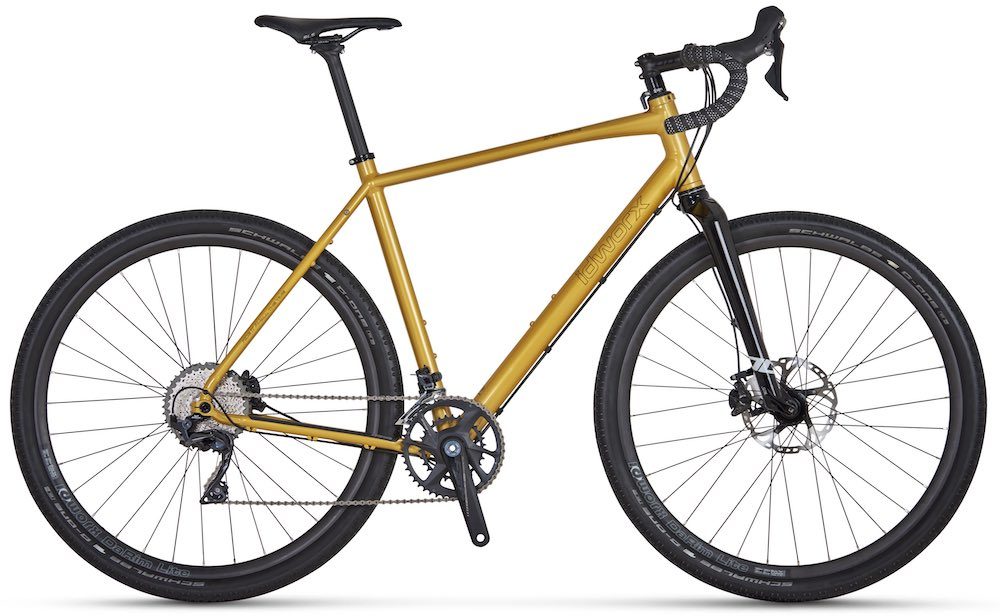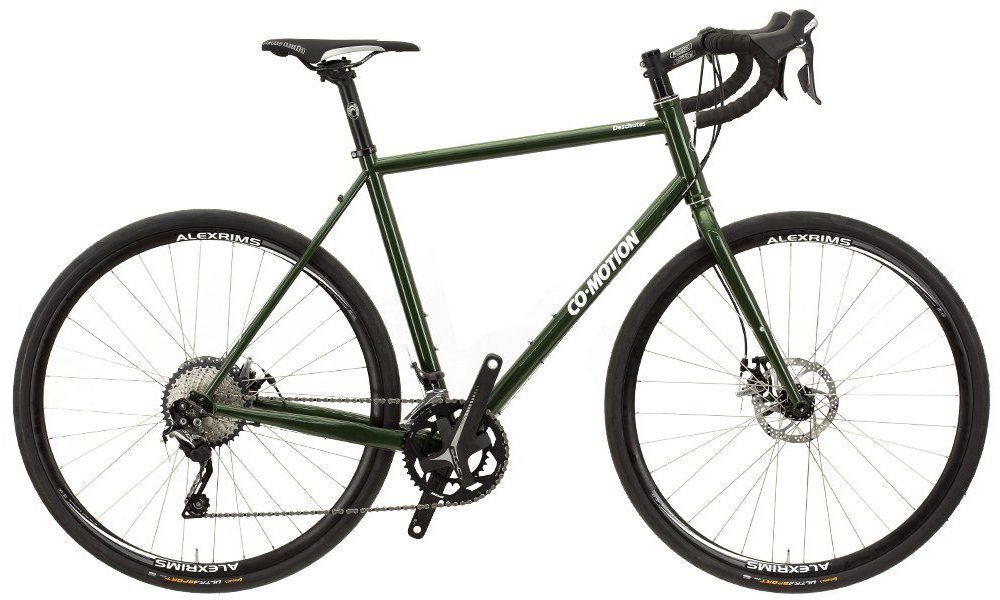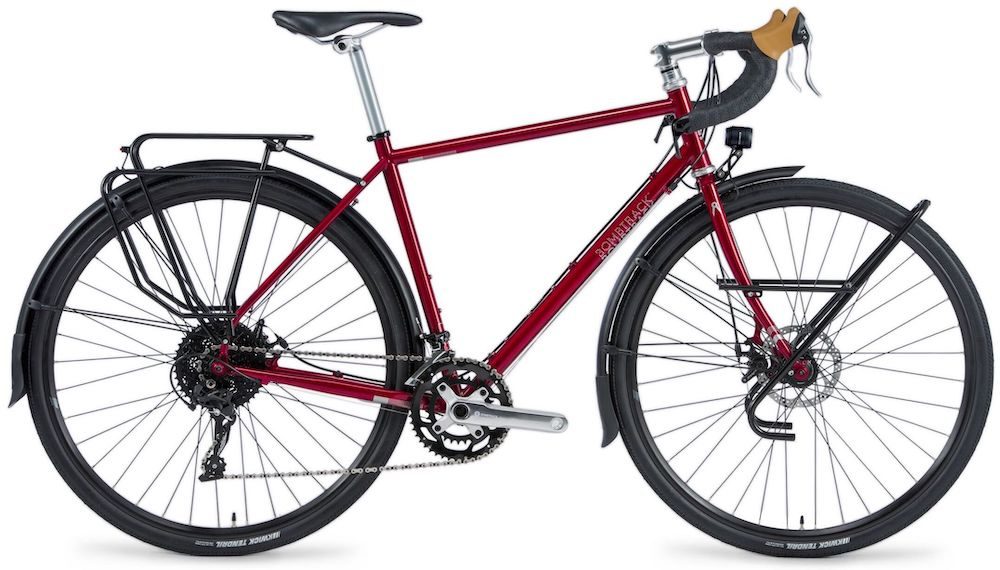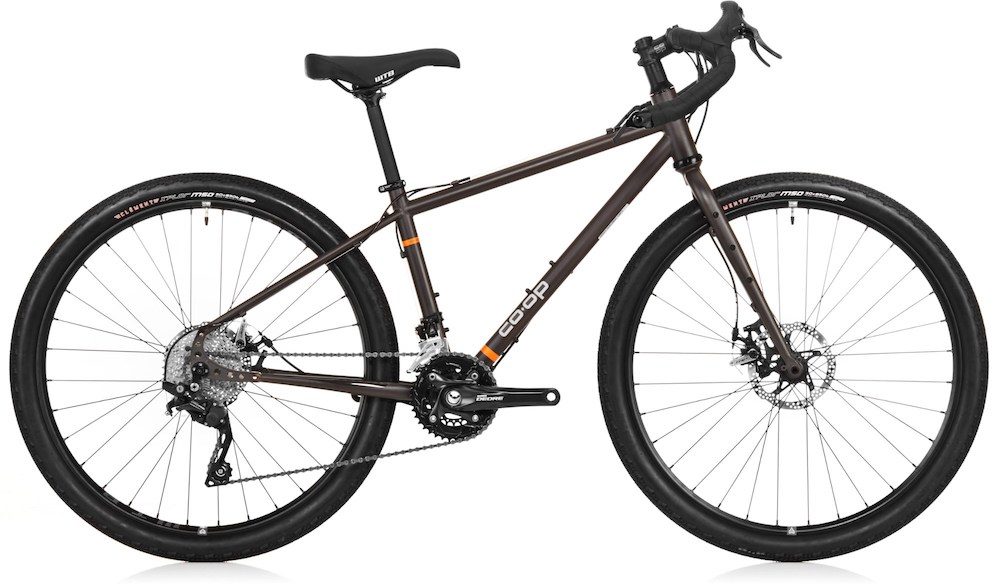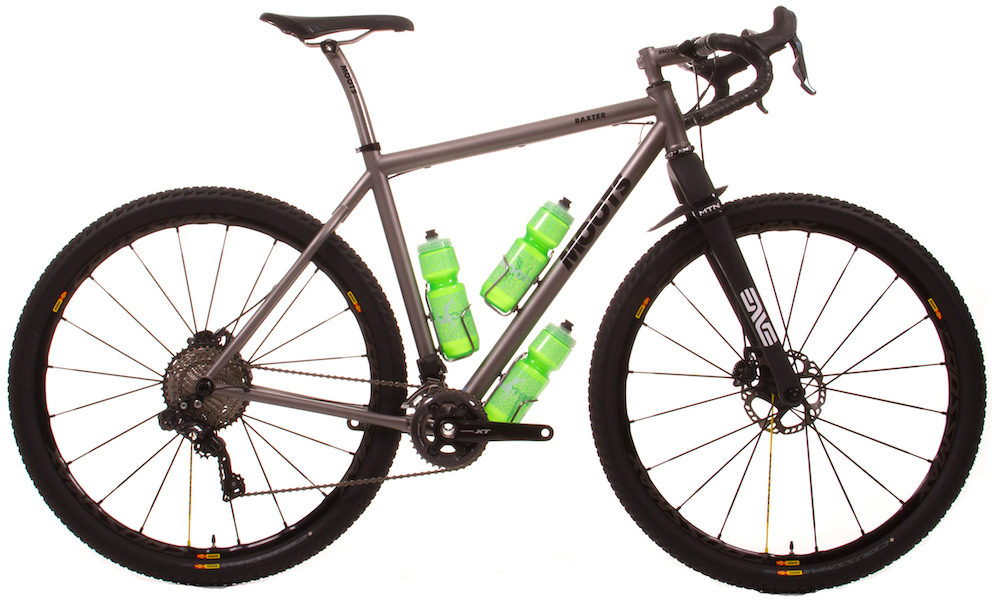Table of Contents
I’ve been in discussion with bike manufacturers for a long time about fitting appropriate climbing gears on their touring and adventure bikes. These discussions have always sparked as I have a pretty firm idea of the average terrain in most countries (I’ve been cycling around the world for many years), but perhaps more importantly, a keen interest in the physics of riding a bike with all of your equipment.
While some cyclists may pick flat routes so they never have to shift into their lowest gear, the majority of travellers will undoubtedly find road gradients exceeding 5 or 10% on their bike tours. As a cyclist with a high power output, I’ve calculated that using a typical touring bike, the maximum hill gradient I can sustain without fatigue is around 10%. The standard touring drivetrain works fine for the majority of my riding, but yet even as a strong rider, I still yearn for lower gears. That’s why I’ve equipped my KOGA with gears that have me riding up 12% gradients for hours if I need, all without riding in the ‘red’.
Lopping 25% off my power output results in what could be considered the ‘typical’ fit male. Assuming the same touring bike, gear and body weight, this cyclist could expect to comfortably ride up a 7.5% road gradient. This would drop to a 6% maximum gradient for someone with a lower fitness level. You can find my tutorial on how to calculate the steepest hill you can ride up HERE.
Drop bar bikes with 2X drivetrains rarely offer gear ratios that can tackle the equivalent hill gradient of a classic 3X touring bike. But today, we’re actually getting closer to having 2X drivetrains with comparable low climbing gears.
Why Is 2X Gaining Prominence On Touring And Adventure Bikes?
Mountain bike drivetrains are changing, which is in-turn having a big influence on touring and bikepacking bike drivetrains. This is because we rely on mountain bike components to achieve our low gear ratios.
A 3X front derailleur and triple chainring crankset constrains the maximum tyre width, as it uses up space at the frame chainstay. In order to (1) increase the diameter of a mountain bike wheel; (2) provide wider tyres, and; (3) fit short chainstays to a mountain bike frame, drivetrain manufacturers developed wide-range cassettes with 40 or 50 teeth in their lowest gear. These new gear systems worked perfectly, allowing manufacturers to evolve mountain bike frame design without losing much gear range at all.
The only issue with drop bar bikes: shifter-to derailleur compatibility.
In the past, you’ve been able to mix and match road shifters and mountain bike derailleurs (7/8/9 speed with Shimano and 10/11 speed with SRAM). Currently, mid-to-high quality mountain bike drivetrains are using 12 speed rear cassettes, which unfortunately, are all incompatible with STI gear shifters.
SRAM hasn’t released a 2X mountain bike drivetrain in the last seven years, and they haven’t released a 3X drivetrain in the last 10. It is clear that SRAM have no intention in anything but wide-range cassettes for off-road use. Shimano on the other hand is producing multiple 2×12 mountain bike drivetrains, along with 2×10, 3×10, 2×9 and 3×9. Their products will be key for bike manufacturers wanting to fit appropriately low gears for bike travel.
Look, this isn’t a big deal yet, but with more drivetrains moving to 10, 11 and 12 speed – the only compatible parts soon will be from low quality, entry-level groupsets. Let’s hope the next generation of Shimano GRX will incorporate derailleurs with longer cages so that a wide-range cassette can be paired with a 2X front derailleur, without fuss.
2X Drivetrains For Drop Bar Bikes With LEGIT Climbing Gears
This is a resource that will show you how to achieve the equivalent low gear ratio of a touring bike using a 2X drivetrain. We will investigate drop bar bikes, in particular, as 2X mountain bike groupsets already offer good climbing gears.
We will be using ‘gear inches’ to compare the lowest and highest gears on a few different 2X drivetrains (you can read how the number is derived HERE). You don’t really need to know what this means other than (a) lower is better, and; (b) a typical 3X touring bike (26-tooth front chainring to 36-tooth rear cassette cog) has a low gear of around 20 gear inches. That’s the number we’re looking to match or surpass.
My hope is that this page gives bike manufacturers an idea how they can spec 2X adventure bikes with appropriately low gears for travel. But it should also give you an idea what parts to use if you’re riding a 2X bike across countries.
NOTE: So we can make direct comparisons between drivetrains, all gear inch numbers below are calculated from a 700C x 38mm wheel.
Fuji Jari 2.3
Lowest Gear: 21.2″
Highest Gear: 100.2″
Crankset: Generic Alloy 44/28t
Cassette: Shimano Alivio 12-36t
Front Derailleur: Shimano Sora
Rear Derailleur: Shimano Alivio
Shifters: Shimano Sora
The lowest cost drivetrain in this list is found on a simple steel gravel/bikepacking bike by Fuji! The Jari 2.3 runs one of the lowest sub-compact road cranksets around with nice and small front chainrings – in this case, 28t to 44t. The Shimano Sora 9-speed STI shifters work well with the current generation Alivio derailleurs to result in a decent 21″ climbing gear.
You can find the Fuji Jari 2.3 for US $999.
Diamondback Haanjo EXP
Lowest Gear: 20.8″
Highest Gear: 115.2″
Crankset: Praxis Cadet 48/32t
Cassette: Shimano HG500 11-42t
Front Derailleur: Shimano Tiagra 4700
Rear Derailleur: Shimano Deore M6000
Shifters: Microshift M10
Diamondback has mixed a road crankset and front derailleur, with a mountain bike rear derailleur and cassette. Shifting is made possible on this 20-speed drivetrain thanks to some Microshift M10 barend shifters. This drivetrain could have easily been offered with a low gear that’s 19.5″, but unfortunately, the Praxis Cadet crankset spider is limited to 32t as the smallest front chainring.
Idworx Grandone
Lowest Gear: 20.5″
Highest Gear: 114.2″
Crankset: FSA Energy 46-30t
Cassette: Shimano XT 11-40t
Front Derailleur: Shimano Ultegra R8000
Rear Derailleur: Shimano Ultegra R8000 GS Long
Shifters: Shimano Ultegra R8000
The Grandone says ‘stuff it’ to the maximum permitted cassette size of Ultegra rear derailleurs (34t)! The big Shimano 11-speed mountain bike cassette looks to fit fine with the Idworx derailleur hanger. Combined with an FSA Energy sub-compact crankset and the Grandone has a 20.5″ climbing gear – all with very high-quality equipment.
You can get your hands on the Idworx Grandone for €3999.
Co-Motion Deschutes
Lowest Gear: 20.5″
Highest Gear: 114.2″
Crankset: FSA Omega 46/30t
Cassette: Shimano SLX 11-40t
Front Derailleur: Shimano 105 R7000
Rear Derailleur: Shimano SLX M7000
Shifters: Shimano 105 R7000
Shifting Converter: Wolf Tooth Tanpan
This Co-Motion does a high-quality 2×11 drivetrain a little bit differently to Idworx. They’ve chosen to pair a Shimano SLX rear derailleur with a 105 shifter (two components that are technically incompatible). Luckily, Wolf Tooth make a special component to adapt the different cable-pull ratios for a perfect match! The result is a Shimano 105 bike, with a mountain bike rear derailleur that can accomodate a wide-range MTB cassette. Match that with a sub-compact road crankset and you get a 20.5″ climbing gear that’s similar to a typical touring bike. The Shimano SLX derailleur will even handle a jump to an 11-42t cassette allowing for an even lower 19.5″ gear!
The USA-made Co-Motion Deschutes is US $2499.
Bombtrack Arise
Lowest Gear: 19.5″
Highest Gear: 114.2″
Crankset: Bombtrack Lyre 46/30t
Cassette: Microshift H103 11-42t
Front Derailleur: Microshift Centos
Rear Derailleur: Microshift M62L
Shifters: Microshift M10 Barend
Ok, now we’re getting into the sub-20″ gears! Bombtrack fitted a relatively obscure drivetrain to their Arise Tour. Microshift make some highly universal drivetrain and shifting components, allowing for lots of mix ‘n match. This bike in particular uses a rear M62L 10-speed mountain bike derailleur, a front Centos road derailleur, a 11-42t wide range cassette and Bombtrack’s own Lyre sub-compact crankset. Shifting is completed with M10 barend shifters.
You can get the 2020 Bombtrack Arise for €1799.
Co-Op Cycles ADV 3.1
Lowest Gear: 18.2″
Highest Gear: 94.4″
Crankset: Shimano Deore 38/24t
Cassette: Shimano HG50 11-36t
Front Derailleur: Shimano Deore
Rear Derailleur: Shimano Deore Shadow Plus
Shifters: Microshift M10 Barend
The Co-Op ADV 3.1 employs 20-speed Shimano Deore mountain bike components, pairing the smallest front chainring size of 24t with a 36t cassette cog. The result is an 18.2% gear that is well-equipped for most mountain roads. I suspect a 11-40t Sunrace cassette would squeeze in too, so technically the climbing gear on this drivetrain could be 16.4″!
The Co-Op Cycles is US $1399.
Moots Baxter
Lowest Gear: 17.8″
Highest Gear: 89.4″
Crankset: Shimano XT M8000 36/26t
Cassette: Shimano XT M8000 11-40t
Front Derailleur: Shimano XT M8050 Di2
Rear Derailleur: Shimano XT M8050 Di2
Shifters: Shimano Ultegra R8000 Di2
If you have ultra-deep pockets, this Moots Baxter might tickle your fancy! While 11-speed cable operated road shifters are incompatible with mountain bike derailleurs, the Shimano electronic components are not. So Moots combined Shimano XT Di2 derailleurs and drive components with Ultegra Di2 shifters. With the 36/26t crankset, you can squeeze a really low gear out of this bike. You can even source a 24t front chainring if you’d prefer an incredibly low climbing gear (16.4″).
You can get the USA-made titanium Moots Baxter with a Di2 groupset for US $8999.


